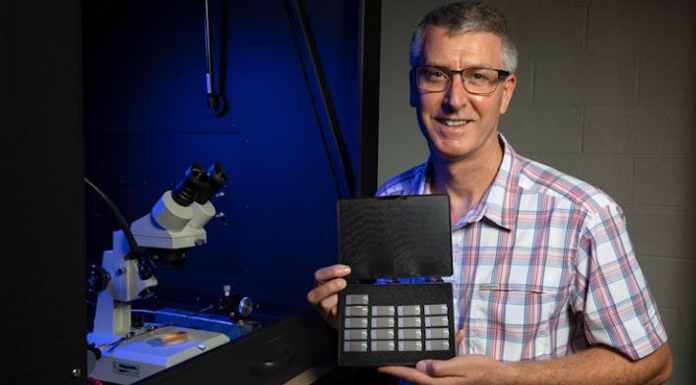Physicists at the University of Arkansas have developed a circuit capable of capturing graphene’s thermal motion and converting it into an electrical current.
The findings, published in the journal Physical Review E, are proof of a theory that the thermal motion of freestanding graphene ripples and buckles in a way that holds promise for energy harvesting.
Paul Thibado, professor of physics and lead researcher in the discovery, said: “An energy-harvesting circuit based on graphene could be incorporated into a chip to provide clean, limitless, low-voltage power for small devices or sensors.”
Thibado’s team found that at room temperature the thermal motion of graphene does in fact induce an alternating current (AC) in a circuit, an achievement thought to be impossible. The team built its circuit with two diodes for converting AC into a direct current (DC). With the diodes in opposition allowing the current to flow both ways, they provide separate paths through the circuit, producing a pulsing DC current that performs work on a load resistor.
Additionally, the researchers discovered that their design increased the amount of power delivered. Thibado said: “We also found that the on-off, switch-like behaviour of the diodes actually amplifies the power delivered, rather than reducing it, as previously thought. The rate of change in resistance provided by the diodes adds an extra factor to the power.”
The team used a relatively new field of physics to prove the diodes increased the circuit’s power. Co-author Pradeep Kumar, associate professor of physics, said: “In proving this power enhancement, we drew from the emergent field of stochastic thermodynamics and extended the nearly century-old, celebrated theory of Nyquist.”
The team’s next objective is to determine if the DC current can be stored in a capacitor for later use, a goal that requires miniaturising the circuit and patterning it on a silicon wafer, or chip. If millions of these tiny circuits could be built on a 1-millimeter by 1-millimeter chip, they could serve as a low-power battery replacement.









